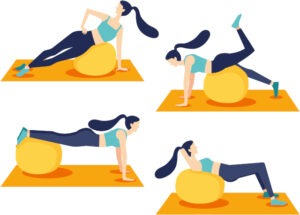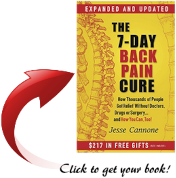Having a strong core refers to having well-developed and durable muscles in the central part of your body. This area, often referred to as the core, includes muscles in your abdomen, lower back, pelvis, and hips. These muscles provide stability and support for various movements and help maintain proper posture. And before we dive into this topic, I want you to know that I am not a medical professional, and what follows is not medical advice. I am just someone on the internet that likes researching topics on pain relief and pain management, and with the hope that you will find interest and value on the information presented.

Image by jcomp on Freepik
A strong core means that these muscles are toned, flexible, and able to work efficiently. Core strength is not just about having visible abs; it is about having a stable and functional midsection that supports your spine and body during everyday activities and exercises.
A strong core can provide several benefits related to pain relief, particularly in the lower back and surrounding areas. Here is how a strong core can help ease pain:
- Improved Posture: A strong core supports good posture. When your spine is properly aligned, there is less strain on the muscles and ligaments around the spine. This can significantly reduce back pain, which is often caused by poor posture.
- Stabilization of the Spine: Core muscles, including the deep muscles of the abdomen and lower back, act as stabilizers for the spine. They help maintain proper alignment and prevent excessive movement in the spine or backbone. When the spine is stable, it is less likely to cause pain or injury.
- Better Weight Distribution: A strong core helps distribute your body weight evenly. When your weight is balanced, there is less stress on specific areas of your body, especially the lower back, hips, and knees. Uneven weight distribution can lead to pain and discomfort in these areas.
- Increased Flexibility: Core strength often comes with increased flexibility. Flexible muscles and joints are less prone to injury. Stretching and exercises that enhance flexibility, often combined with core exercises, can alleviate pain, and improve overall mobility.
- Preventing Muscle Imbalances: Weak core muscles can lead to muscle imbalances, where certain muscles have to compensate for the weakness of others. This can then lead to strain and pain. A strong core helps prevent these imbalances, reducing the likelihood of pain.
- Enhanced Support During Movement: Whether you are lifting heavy objects or just bending down to tie your shoes, a strong core provides essential support for various movements. When your core muscles are engaged, they support your spine and reduce the stress on your back, preventing pain and injury.
- Improved Circulation and Breathing: Core exercises often involve diaphragmatic breathing, which promotes better circulation and oxygenation of muscles. Improved blood flow can help in the healing process and reduce muscle soreness and pain.
- Pain Prevention: By strengthening the core, you can prevent future pain and injuries. Regular exercise that targets the core muscles can keep them strong and supportive, reducing the risk of developing chronic pain conditions.

It is important to note that while a strong core can help with pain relief, it is equally crucial to maintain overall body fitness. A balanced exercise routine that includes cardiovascular exercises, strength training, flexibility exercises, and core workouts can contribute to a healthy, pain-free body. Additionally, if you are experiencing chronic pain, it is always advisable to consult a healthcare professional or a qualified fitness trainer for personalized guidance.
To Your Success & Freedom,
Glenn Shimabukuro



